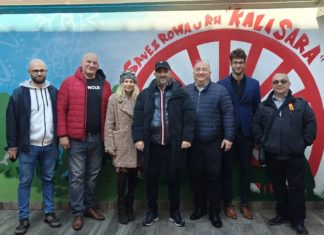In a recent parliamentary debate, Boris Milošević pointed outthat Croatian Radiotelevision has for years ignored the adequate media representation of minorities, and there is absence of any progress in that regard. He stressed that minority representatives had expressed dissatisfaction with the share of minority content on Croatian Radiotelevision, the lack of staff dealing with minority issues and their education, as well as programs in the languages of national minorities – but all in vain.
Situation at all levels, not just the production of minority media content, at the pathetic Croatian Radiotelevision, which sues its own journalists, is devastating. Nevertheless, it should be recalled that the Constitutional Law on the Rights of National Minorities guarantees the Croatian national minorities the right to access the means of public communication and the performance of the public broadcast in the language and script they use. The law also prescribes a specific obligation for public broadcaster and radio to promote understanding for members of national minorities, produce and broadcast programs that promote cultural specificity of national minorities, etc.
The media, remains in theory at least, should reflect the diversity of society, both in programs and in personnel policy. For now, this requirement is legally binding public media services exclusively, but in order to promote credible social plurality and inclusiveness, such a commitment should be set before all media, including commercial ones.
When it comes to Croatian Radiotelevision minority programmes, they maintain the characteristic of pure formalism year after year. Such content is broadcast in an unattractive time slot for viewers, topics are largely reduced to cultural phrases and commonplaces, a feeble and declarative presentation of care and engagement, walking on eggshells without prejudicing politically challenging and “provocative” questions … They lack emancipatory spirit and liveliness and all in all seem to be the result of following the instructions from the worst patronizing pathetic brochures on vulnerable groups.
Besides, such programmes have a ghettoising effect, presenting minorities as part of a parallel, rather than a common society. “The rest” of the population does not watch them because they feel such content is none of their business, and the members of minority groups do not watch them either because they have nothing challenging nor interesting to offer.
A satisfactory integrating media model has thus never been materialized in practice, neither when it comes to the Croatian Radiotelevision, specialized minority media nor ‘other’ media in general. Commercial media, led by market interests, feel that it is not mandatory to encourage interculturality and solidarity in their programs, and issues related to national and other minorities are mostly depicted through political issues, often promoting deeply rooted stereotypes turning the representatives of minorities into caricatures. By marginalization and superficial processing of minority-related topics, mainstream commercial media are thus contributing to the exclusion and discrimination of minorities in society.
Media specialized in minority issues deal with the specific needs, problems and interests of particular minority groups. Although their contribution to the achievement of the constitutionally guaranteed right toaccess the media in the language they useis important, their media work is also problematic as it unfortunately contributes to the ghettoization of the information space for minorities, since they remain confined within the narrow space – they address members of national minorities primarily and almost exclusively, therefore they reach a limited number of readers only.
It sends the message that minority issues concern minorities only, which is of course not true, because we all coexist in this society and our interrelations create certain concerns, as well as their potential solving.
If all the media were concerned with minority issues in a wider, diverse and inclusive way, avoiding stereotyping and superficiality, commonplaces, and the illusion of commitment, we might be one step closer to a genuine integration media model, and thus to a better integration and social coexistence in general.
For the time being, we have mostly deficient and unsatisfactory attempts by minority media representations, which are actually mirroring mostly bad and defeating position of representatives of minority groups in our society – from those who live without electricity in the year 2019 to those at whom voices and fists are raised when they walk down the street holding hands with someone they love.












